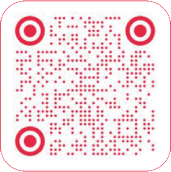A Comparative Study of Factors Associated with Relapse in Alcohol Dependence and Opioid Dependence

Some substances have a higher relapse potential due to their addictive nature and withdrawal symptoms. Substance use disorders are chronic conditions, and recovery is a lifelong process. Research emphasizes the importance of seeking help for alcohol and drug use disorders due to its impact on long-term sobriety. Inquire about the qualifications of staff members as well as the specifics of the therapies offered prior to committing to a particular program.

Does relapse to drug use mean treatment has failed?

You may be emotionally ‘checking out’ of recovery by withdrawing from support groups, not expressing your emotions, failing to take care of yourself or focusing on other people and their problems instead of your own. This is because we believe here at Rehab 4 Alcoholism that abstinence is the most effective form of addiction treatment. Many people who experience alcohol addiction have also experienced several personal challenges which may have contributed to the addiction.
Alcohol Abuse Stats and Mortality Rate
While even this increase hasn’t neared the Sober living house all-time high of 2.75 gallons in 1980, it does highlight increasing patterns of abuse. Approximately 85.6% of people over age 18 have sampled alcohol at least once, and around 25.8% of adults reported engaging in binge drinking within 30 days of the survey, according to a National Survey on Drug Use and Health. This behavior reflects a growing trend toward heavy and episodic drinking, particularly among younger adults. Reflect on the factors that led to the relapse and consider adjusting your alcohol or drug relapse prevention plan accordingly. Evidence-based therapies such as cognitive behavioral therapy (CBT) have been shown to reduce rates of relapse and promote long-term recovery.
- The 43% remission rate among individuals who did not obtain help quickly is consistent with the rates obtained in prior studies of individuals who were aware of their alcohol problem and sought but did not obtain treatment 3,4.
- 22% of all Americans with an alcohol use disorder will have a relapse if they live more than an hour’s drive from an alcohol treatment center.
- Among neural measures, brain atrophy in the medial frontal regions and hyperreactivity of the anterior cingulate during withdrawal were identified as important in drug withdrawal and relapse risk.
What Percentage of Alcoholics Recover and Stay Sober?

Less severe problems (fewer current drinking problems and fewer negative life events) and better coping skills (less avoidance coping and drinking to reduce tension) were more predictive of remission in the no help than in the helped group. Moreover, compared to individuals who remitted with help, individuals who remitted without help had fewer problems or more resources on each of these indices. Among treated individuals, short-term remission rates vary between 20 and 50%, depending on the severity of the disorder and the criteria for remission 1,2. Initial studies suggested that between 5 and 45% of untreated individuals with alcohol use disorders may achieve some improvement or remission 3,4. Subsequent studies estimated untreated remission rates to range from 50 to 80% or more, depending on the severity of alcohol problems. However, these studies focused primarily on general population or media-recruited samples; that is, on individuals who had not initiated help-seeking and who may have had less severe and as yet unrecognized problems 5,6.

78% of all Americans with an alcohol use disorder will have a slip, lapse and relapse at some point during their recovery process. 25% of all Americans with an alcohol use disorder will have a relapse because they are unable to find a long term support network. 19% of all Americans with some form of alcohol abuse disorder will be completely abstinent after a year. 55% of all Americans with some form of alcohol abuse disorder find it harder to avoid drinking on special occasions. 18% of people in the United States who are considered to be recovering alcoholics have been able to abstain from drinking entirely one year later.
Is It Safe to Mix Cocaine and Xanax? Dangers, Effects & Treatment
No relapse is too big to recover from, and in fact, you can take immediate action to regain your sobriety. However, it’s important to assess the relapse and identify things you can change or adapt to prevent a similar experience in the future. Tim enjoys writing about addiction and recovery, this topic has personally affected him, fuelling his desire to help others. Just remember that you are not a failure and that relapse is merely a stepping stone towards long-term recovery. If you believe that you would benefit from additional treatment after a relapse, such as a supervised detox or further counselling, then by all means, seek professional help.
- Instead of looking at it with rose-tinted glasses, think about the feelings of guilt and sadness and self-hatred that often follow a binge or relapse.
- You may miss using alcohol, fantasise about drinking, get back in touch with old drinking friends or even actively begin planning a relapse.
- The longer someone stays in a recovery program, the lower their risk for relapse is.
- For more detailed insights, exploring statistics for substance abuse in medical professionals can reveal how peer support within professional networks also contributes to sustained recovery and reduced relapse rates.
- American Addiction Centers (AAC) operates treatment centers throughout the country.
- An estimated 85% of people with alcohol or drug-related addiction issues relapse within a year after starting treatment.
Findings indicated that less than 25% of primary marijuana- and cocaine-dependent patients were abstinent at discharge, while less than 35% were abstinent from alcohol and opiates over the course of a 1-year period (Fig. 1). The latter rates were higher, as non-agonist medications for alcohol and opioids were actively used in treatment in conjunction with behavioral relapse prevention approaches. This paper examines the new research on identifying biological factors that contribute to addiction relapse risk. Prospective studies examining relapse risk are reviewed, and clinical, biological, and neural factors that predict relapse risk are identified. Clinical factors, patient-related factors, and subjective and behavioral measures such as depressive symptoms, stress, and drug craving all predict future relapse risk. Among biological measures, endocrine measures such as cortisol and cortisol/corticotropin (ACTH) ratio as a measure of adrenal sensitivity and serum brain-derived neurotrophic factor were also predictive of future relapse risk.
Alcohol Relapse Statistics
The study was conducted in a deaddiction unit among patients seeking treatment, and hence is not representative of all alcohol relapse statistics alcohol and opioid users. Finally, no biological factors were studied in relation to relapse and the sample size was small. An estimated 85% of people with alcohol or drug-related addiction issues relapse within a year after starting treatment. 40–80% of patients undergoing treatment for alcohol use disorders experience a “lapse” within the first year post-treatment. Individuals using stimulants like cocaine and amphetamine face a 50% relapse rate within the first year. Alcohol relapse rates will differ from person to person, but the rates range from 40% to 60%.




